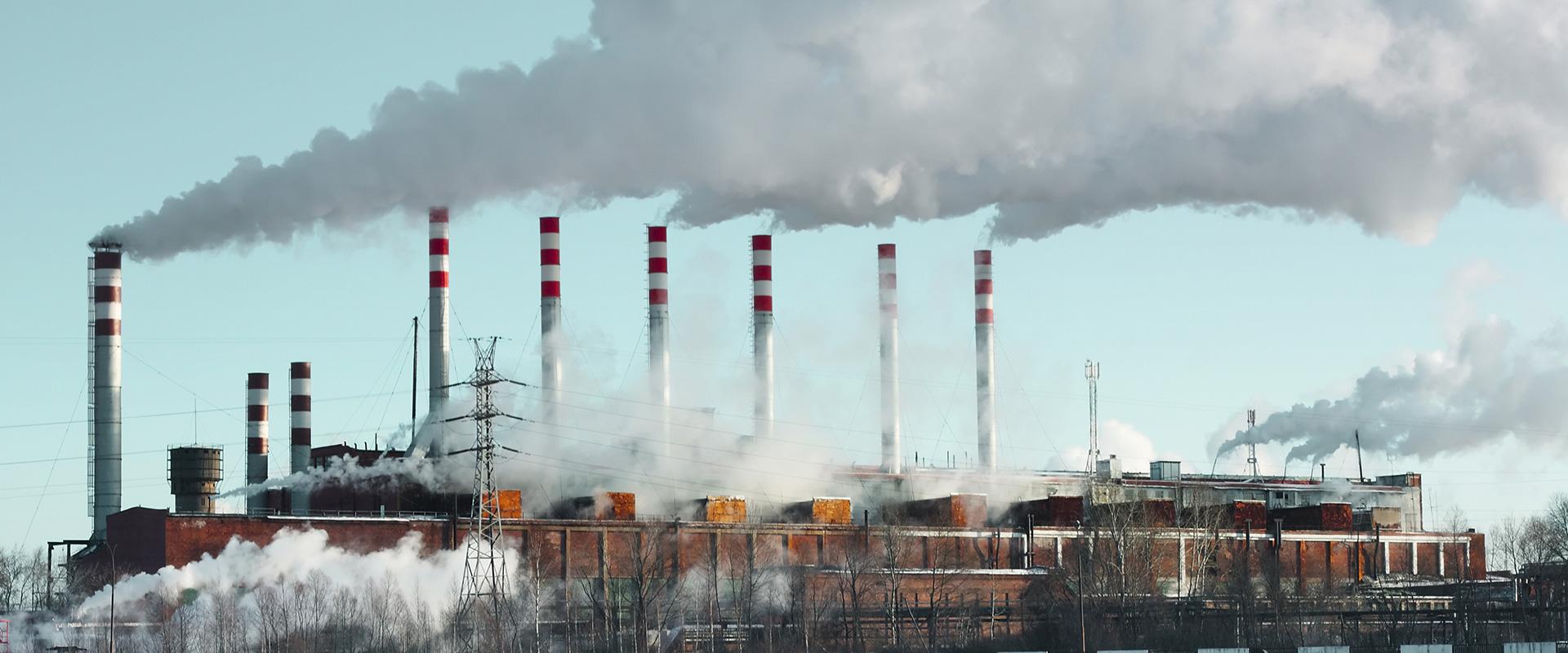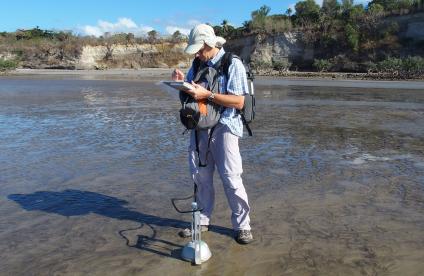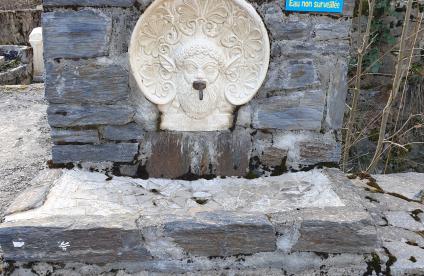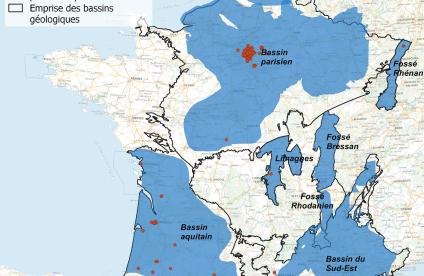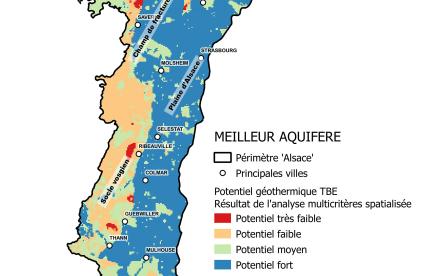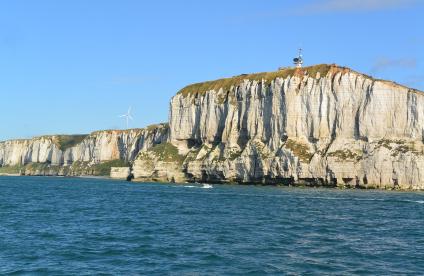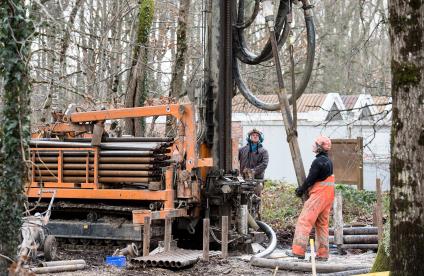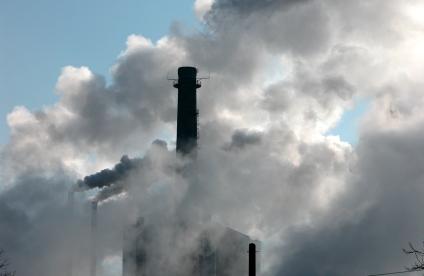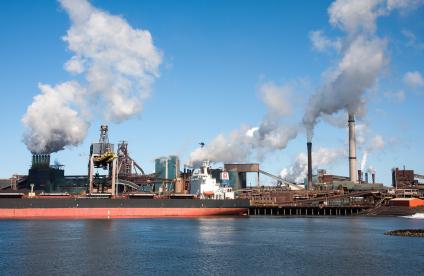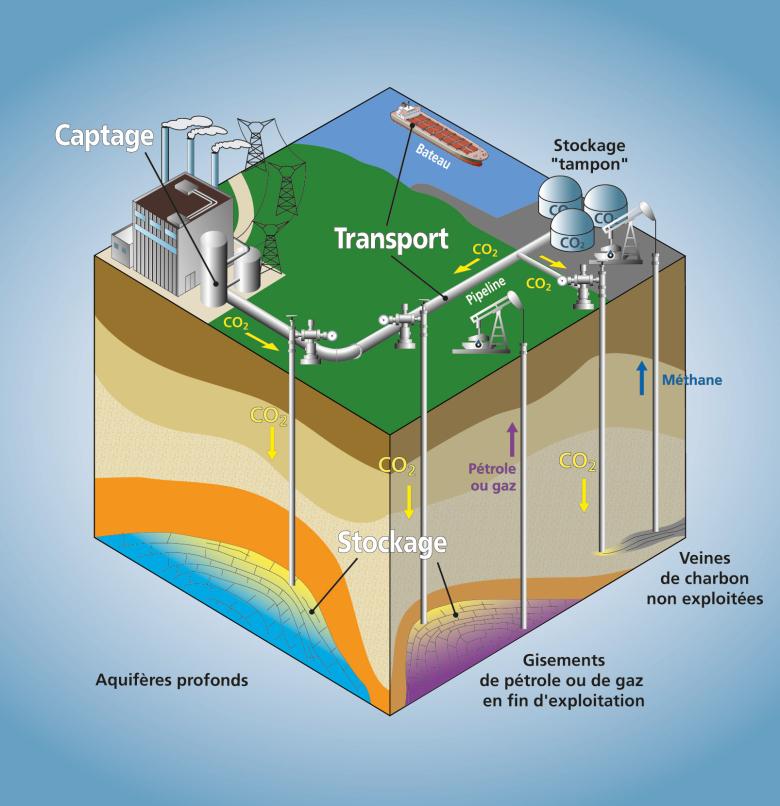
The diagram shows the various options for storage of CO2 in deep aquifers, oil fields or coal seams.
© BRGM - BLCom
Issues and needs
Controlling greenhouse gas (GHG) emissions is a major challenge in the fight against global warming. In order to achieve carbon neutrality by 2050, national and European political authorities are committed to the decarbonisation of our society in order to reduce CO2 emissions into the atmosphere. Among the range of measures that need to be implemented, the capture of CO2 emitted by industrial facilities and its sustainable storage deep underground is one of the more promising solutions being considered.
With a global storage capacity of at least 2,000 Gt, geological formations can trap very large volumes of CO2 for millions of years. Knowledge of the behaviour of CO2 in the subsurface has shown that carbon is efficiently trapped in a dense form (supercritical state) in the pores of reservoir rocks beyond a depth of 800 m.
For an industrial company to seize this opportunity, all the underground parameters around its facilities that emit the most CO2 have to be studied to accurately assess the capacity for geological storage of CO2.
Our added value
BRGM is a widely recognised player in research and innovation in the geological storage of CO2, and shares its expertise on the subject with many scientific and technical networks (it is a member of the ANCRE Alliance, Chair of the French CO2 club and of the European CO2GeoNet network; it is also the French representative in the European research infrastructure for CO2, ECCSEL).
As a recognised public institution for the knowledge, management and development of subsurface potential, BRGM is able to carry out the entire sequence of studies required to characterise and evaluate CO2 storage capacities in the subsurface:
- Review of existing data (bibliographic and basin syntheses) to study the geology of the site.
- Reprocessing and interpretation of old data: use of geological exploration databases (oil and geothermal), subsurface database (BSS), access to drilling data (geophysics and core samples).
- Possible acquisition of additional data: geophysical imagery, new boreholes or deep core sampling.
- Experimental characterisation of reservoir and caprock reactivity following the injection of CO2 (supercritical, gaseous, dissolved).
- 3D geological modelling of the storage system (reservoir and cover): simulation of injection and water-CO2-rock interactions to predict the migration of CO2 migration in the reservoir and its mineral fate (long carbon cycle).
- Estimation of long-term storage capacities by means of predictive numerical simulations.
- Study of the risks and impacts of storage on the underground environment (leaks, overpressure, etc.).
- Development of sensors and protocols for the monitoring of future storage sites during and after the injection period.
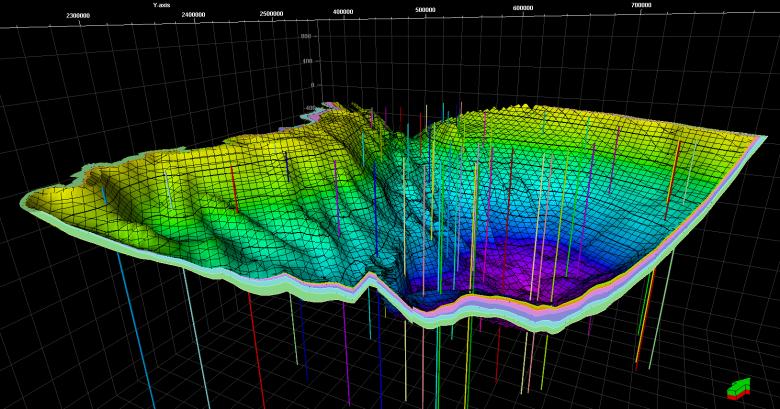
3D geological model of the Paris Basin showing the Dogger deposit environments.
© BRGM - Sunseare Gabalda
Analytical tools and platforms
- Rock and fluid analysis and characterisation laboratories.
- Processing and quantitative interpretation of seismic data to determine aquifer geometry and reservoir parameters (porosity).
- BioREP experimental platform: reproduction of underground environments and industrial operating conditions for geochemical and microstructural assessments.
- Geological modelling of reservoirs: PETREL, GEOMODELLER 3D.
- Simulation of multi-component and multi-phase flow: TOUGH, ECLIPSE/INTERSECT, COMPASS.
- Hydrodynamic modelling: TOUGH, MARTHE.
- Geochemical modelling: PHREEQC.
- Coupled reactive transport modelling: TOUGHREACT.
A few references
- Complete storage site characterisation: geophysical, geological, geochemical and hydrogeological, injection modelling/simulation, development of surveillance plan and well design (PilotSTRATEGY project - 2021-2026)
- Evaluation of storage capacities in the Paris Basin - Dogger and Triassic of the Paris Basin, Lower Triassic of Lorraine. (ADEME France Nord project)
- Study of the long-term processes involved in the geological storage of CO2 in order to increase its efficiency and safety (ULTimateCO2 project ).
- Identification of potential CO2 storage sites in south-eastern France and initial capacity estimates (VASCO project - 2012)
References
Solutions


